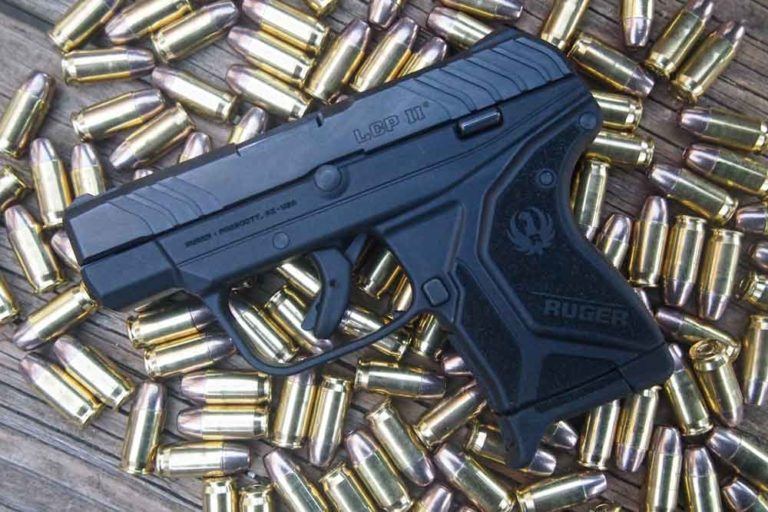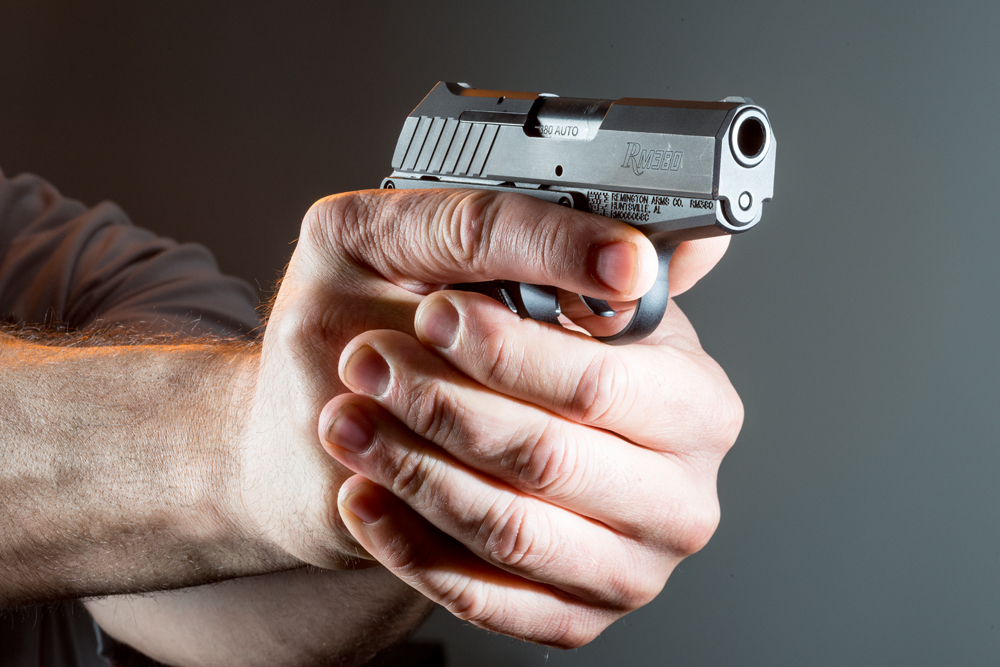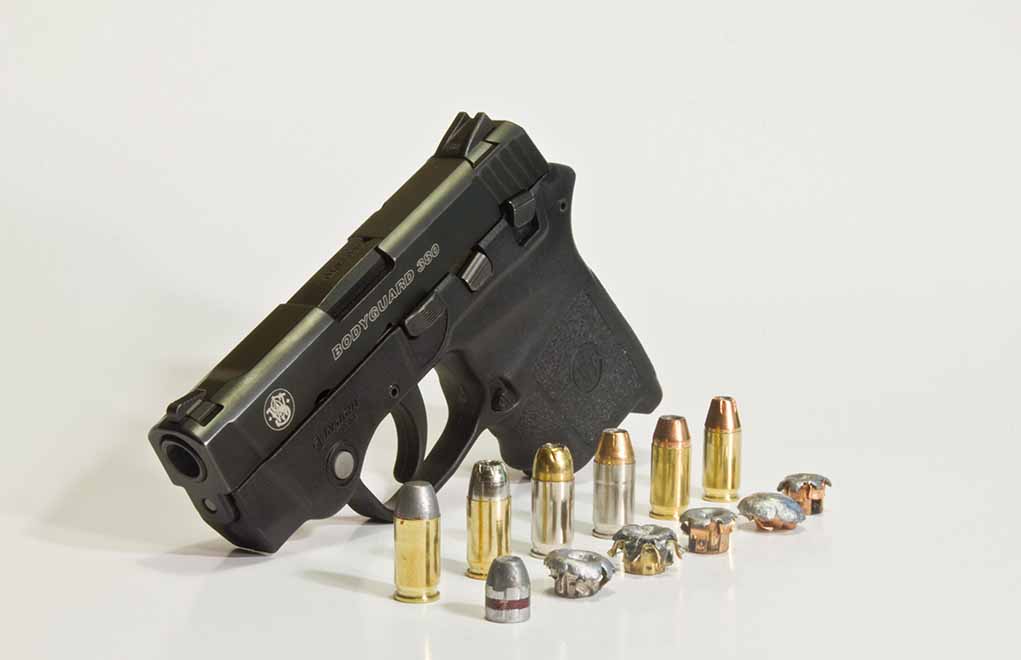
Yes, there is still a .380 vs 9mm debate and some reasons to still consider the smaller option to keep you covered.
How Does the .380 Beat The 9mm For Self-Defense:
- More manageable recoil improves its shot-to-shot accuracy potential.
- Pistols chambered for it generally use lighter recoil springs, thus are easier to manipulate.
- Cambered in some of the smallest pistols, it's more suited for a backup gun role.
- Advancements in ammunition have improved its terminal performance.
Is the .380 vs 9mm debate over? Given the introduction of the Sig Sauer P365 and comparable 9mm models, it sure seems any sizzle to the conversation has quickly cooled.
From the start, armed citizens understood what they were getting into when they chose .380 ACP: an under-powered and marginal self-defense round chambered in pistols convenient as all heck to carry. Among the smallest semi-autos available, what the .380 lacked in Thor’s-hammer power, it more than made up for in expediency. Try to make excuses to leave a Ruger LCP II or Colt Mustang at home. If you can carry a cell phone, you can carry a .380 ACP.
Except, now 9mm pistols are as compact and easy to carry. Head to head, the LCP II is only marginally more pocket-sized than the P365 or micro 9mm Springfield Hellcat. Nearly as small .380 options, yet more powerful—you almost have to be plum loco not to level up. Right?
For most, the answer is yes. But that doesn’t mean the .380 vs 9mm conversation is dead and buried. Diminished, the good old .380 still has some fight left. While it might not be the top self-defense choice, it still lands some punches against the 9mm Luger.
.380 vs 9mm: Recoil
Among the most blatant arguments for the .380 ACP is the caliber is much milder. It makes a world of sense. The cartridge holds a bullet the same diameter as the 9mm (.355”) but in a smaller case with diminished capacity (roughly speaking, 15% less than the 9mm in grains of H2O). In turn, out of guns of equal weight the .380 produces nearly half the recoil energy.

Now, this doesn't always mean a .380 pistol won’t buck around the hand. Given the small options, many are downright jumpy, punching above their weight in felt recoil (the recoil shooters perceive). But if you think tiny .380 pistols are skittish, wait until you take hold of an analogous model in 9mm.
Recoil shy know which side they take in the .380 vs 9mm debate and the lack of kick it’s no small advantage to them. Flinch is a bear to tame, but less likely in tamer cartridges. Since accurate hits carry more weight than other variables, anything enhancing it—even if it's for a certain segment—has to be counted as a plus.
Read Also: Flinch! 3 Tips to Overcome It
.380 vs 9mm: Manipulation
Dovetailing off recoil is how simple most .380 pistols are to run away from the trigger. Primarily, we're talking slide manipulation. Lighter recoiling cartridges require lighter recoil springs, the side benefit, the slide is that much easier to rack.
Don’t scoff. There’s a cohort of shooters precluded from semi-auto pistols—striker-fired especially—due to this factor. Elderly, infirmed and a number of other individuals with diminished hand strength, for instance. While some gunmakers have developed easier to manipulate pistols as of late—such as Smith & Wesson and Walther—powering down to the .380 ACP in many cases eliminates this issue.
Take Aim On The .380 ACP:
- Top .380 Pistol Options For Deep Carry
- Concealed Carry: Is The .380 ACP Enough For Self-Defense?
- .380 Ammo For Defensive Use
- Concealed Carry: The .380 Pistol For Self Defense
- Masterful Micro: Remington RM380 Review
.380 vs 9mm: Backup Gun
While the 9mm has encroached on the .380’s turf as a primary carry option, the smaller ‘nine’ still cuts the more dominant figure as a backup gun. The caliber continues to offer the tiniest options on the market, without dropping to an inadvisable caliber. And next to adequate caliber and reliability, size is generally considered the most important factor of a backup gun.
Additionally, petite .380 pistols are legion and come in a slew of different configurations. This opens up options. In all likelihood, no matter your style of backup carry—be it ankle, belly band, pocket or otherwise—there’s something in .380 that fits the bill.
Read Also: Should You Carry a Back-Up Gun?
.380 vs 9mm: Ammunition
The 9mm has and will always have a power advantage over the .380. Physics dictates nothing less. A quick comparison.

Most .380 ammunition of the defensive variety kicks an 80- to 100-grain bullet out at the muzzle anywhere from 900 to 1,150 fps, generation around 162 to 294 ft-lbs. of energy at the muzzle. Conversely, the 9mm spits out a 115- and 147-grain bullet anywhere around 1,000 to 1,300 fps at the muzzle, with energy ranging from 294 to 495 at the muzzle. In most cases, there’s a marked difference in bullet mass and the velocity it’s moving. Given, velocity is the main variable dictating defensive ammunition’s performance this is a big deal.
That said, like all ammo, .380 ACP self-defense options have improved vastly in recent decades. Where the tiny 9mm once struggled on the FBI penetration (12 to 18 inches) and expansion (1.5 times the original diameter) tests, there are select loads that pass. Are they a numerous as 9mm Luger? Not by a long shot. But they exist, making the caliber more viable for self-defense … at least relative to the past. The wrinkle here, if you choose a .380 ACP ammunition homework is imperative.
Parting Shot
You’d be hard-pressed to find any firearms instructor worth his or her salt suggesting the .380 ACP over the 9mm. On paper, the Luger is a more potent and capable self-defense option no matter how you cut it. And it has a much more complete self-defense resume as compared to the .380. Yet, there are wrinkles to every argument.
Load Up On 9mm Ammo Knowledge:
- Best 9mm Ammo For Self-Defense
- Best Handgun Caliber for Self-Defense – 9mm, .40 S&W or .45 ACP?
- Medium-Bore Comparison: 9mm vs .38 Special
For some, the 9mm Luger proves too lively to accurately make hits shot to shot. And its pistols can be a prohibitive handful to troubleshoot malfunctions promptly. OK, maybe not for you. But how about your aged mother or arthritis-stricken grandparent? In this light, the logic of the continued .380 vs 9mm debate (or .38 Special vs 9mm, for that matter) shines through.
Most can agree, the .380 isn’t the top choice for concealed carry or self-defense. But with some considerations, the caliber is still a practical one. You simply have to decide if it’s sensible for you and your particular circumstances.

Next Step: Get your FREE Printable Target Pack
Enhance your shooting precision with our 62 MOA Targets, perfect for rifles and handguns. Crafted in collaboration with Storm Tactical for accuracy and versatility.
Subscribe to the Gun Digest email newsletter and get your downloadable target pack sent straight to your inbox. Stay updated with the latest firearms info in the industry.

![Best Concealed Carry Guns In 2025 [Field Tested] Wilson Combat EDC X9S 1](https://gundigest.com/wp-content/uploads/Wilson-Combat-EDC-X9S-1-324x160.jpg)


![Best 9mm Carbine: Affordable PCCs [Tested] Ruger Carbine Shooting](https://gundigest.com/wp-content/uploads/Ruger-Carbine-Shooting-100x70.jpg)
![Best AR-15: Top Options Available Today [Field Tested] Harrington and Richardson PSA XM177E2 feature](https://gundigest.com/wp-content/uploads/Harrington-and-Richardson-PSA-XM177E2-feature-100x70.jpg)

The 9mm Parabellum was designed as a service duty caliber.
It was meant to be used in full-sized handguns.
The 9mm Kurz was designed to give more punch than the weak 20, 30, and 32 caliber cartridges of the day.
The 9mm was designed to surpass the more diminutive rounds in power just because there had been so many failures to stop attackers in the past. Of course, there have been strides in both projectile and powder technologies; however, physics can’t be ignored.
Regardless, having a 380 is far better than only using harsh language.
“Except, now 9mm pistols are as compact and easy to carry. Head to head, the LCP II is only marginally more pocket-sized than the P365 or micro 9mm Springfield Hellcat.”
I stopped reading here. It’s obvious this blogger has never actually held any of these pistols. These “micro” 9s are still Much larger, thicker, and heavier than even larger 380s, much less the LCP 2.
Another consideration is weight. While the P365 and Hellcat are small the weight fully loaded is a lot heavier. Even the Kahr PM 9 in a 6+1 is much heavier than the Kahr P380 or LCP that slips easily into your pocket
There is one other round that has and is in use by many that should be considered in this article. The Russian 9×18 fits squarely in between the 380 and 9×19. There are many law enforcement and concealed carry folks that carry this round in a CZ-82 with 12 rounds. Hornady makes some great defensive ammunition for it. For it’s size and capacity it is a big contender for a CCW in a tried and true package. I carry one in a shoulder holster. All the benefits of a easier slide action and trigger in a smaller package and ammo is less expensive to practice with.
Excellent point!
It is obvious that the author has never been involved in a real gunfight.
Even a single .22 caliber bullet is sufficient to kill a person. Organized crime has used the technique quite effectively over the past 100 years.
The .380 is designed as a backup option for police and undercover operatives as a last measure of self defense.
That means for encounters with adversaries only a few feet away. In other words, up close and personal.
If the author or any readers need proof of that then offer to have someone shoot you in the head with a .380 and see what happens.
The first thing that happens is; it will prove your argument for choosing a 9mm over a .380 gets shot all to hell!
I agree with you completely. I had this debate with people about using number 4 birdshot over slugs in my 12 gauge home defense shotgun. I told him “let me shoot you with birdshot then and see what happens then.” Of course, no one will charter into that territory lol. But I always kept my first 2 shots as birdshot, 1, because I have children and neighbors and in a realistic home defense situation, you have to think about these things. This isn’t like the movies, this is real life. Bullets travel through doors, walls etc. Number 4 birdshot to me is plenty enough to take care of an intruder especially when the payload expands and it’s hitting your chest, face, eyeballs etc.
I always keep my shotgun set up with first two shots as birdshot, then either number 1 buck or 00 buck or both to follow in case I need it.
The only thing I will say, is while he’s a .22 can kill you, I always like to have my 9mm for self defense and EDC as I have heard of the horror stories of someone shooting a .22 or .380 and the person was wearing heavy clothing with a carthart jacket and were unable to stop the attacker. Where as I feel the 9mm provides that extra necessary punch.
However, being from the east coast where it gets real cold in the winter.. I’m also the type of person that uses hollow points during spring, summer, part of fall time, and I’ll switch to FMJ for that exact reason in the winter time for extra penetration through much heavier clothing.
I know this post is old as hell lol but I wanted to comment on what you said because I agree and wanted to give my two cents.
Sick comment to get shot in the head.